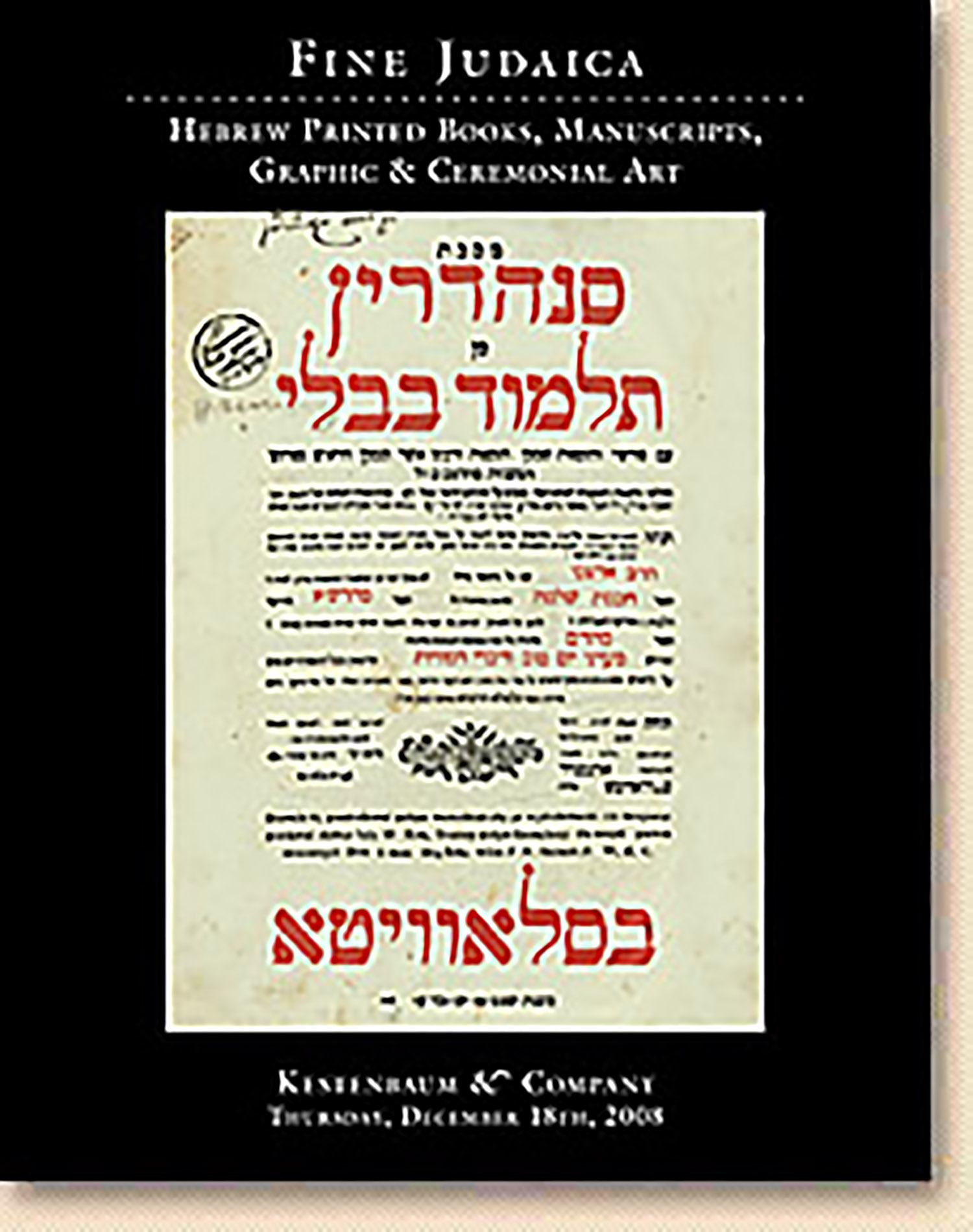Siegel, Joshua. Eiruv ve-Hotza’ah [on the permissibility of erecting an Eiruv in Manhattan]

AUCTION 42 |
Thursday, December 18th,
2008 at 1:00
Fine Judaica: Hebrew Printed Books, Manuscripts, Graphic & Ceremonial Art
Lot 42
(AMERICAN JUDAICA).
Siegel, Joshua. Eiruv ve-Hotza’ah [on the permissibility of erecting an Eiruv in Manhattan]
New York: Ze’ev Wolf Hirschprung / Isaac Rachlin and Partners 1907
Est: $500 - $700
PRICE REALIZED $450
Permits the transportation of personal objects in the Lower East Side neighborhood of New York on the Sabbath.
This pamphlet engendered great controversy as to whether the proposed Eiruv, utilizing the rivers and the “El” as boundaries, was valid or not. Consequently, the author included responsa of a number of European decisors supporting his position (viz. R. Shalom Mordecai Hakohen of Brezan, Aryeh Leibush Halevi Hurwitz of Stanislav, and Moses Nahum Jerusalimski of Kielce).
The pamphlet was published in two stages: Pages 1-26 were published first and sent to various rabbis for their concurring or dissenting opinions. Once responses were received, pages 27-54 were published containing the supporting responses.
* ACCOMPANIED BY: Bernstein, Judah David. Kuntres Hilchetha Rabtha Le’Shabatha [forbidding transporting objects in Manhattan on the Sabbath]. FIRST EDITION. ff. 33, (1). Light stains. Printed wrappers, chipped. 8vo. [Goldman, 1145]. New York, M. Rotwein, 1910.
A refutation of Joshua Siegel’s Eiruv ve-Hotza’ah.
Bernstein’s Halachic opinion prohibits carrying on the Sabbath day in Manhattan. Pointed as problematic in this regard, Bernstein notes the many bridges and tunnels running to the outer boroughs and to New Jersey. He also discusses thoroughfares such as Delancey Street which cut across the city and Central Park, where thousands of people congregate. Of interest, an appendix contains a responsa prohibiting the use of electricity on the Festivals.
